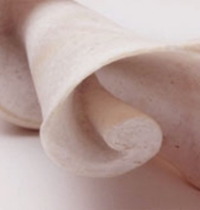While working towards my counseling degree, I wrote this research paper advocating the use of touch in psychotherapy. I hope that you can look beyond the paper’s formality and enjoy the content!
The Controversy
The use of touch in psychotherapy is controversial. Many therapists and counselors nonetheless find it beneficial and some even necessary, for facilitating health. While physical touch is widely acknowledged and scientifically proven to have a healing impact on physical health, (Dworkin-McDaniel, 2011; Zur, 2011), the use of touch in a psychotherapeutic setting has historically been perceived as questionable if not absolutely forbidden (Pinson, 2002). This paper will briefly discuss the origin of this ambivalence and will defend the use of touch as beneficial and ethical.
Why Not?
There are many sources feeding the ambivalence surrounding touch in psychotherapy. Touch has the possibility of conveying inappropriate power and/or sexuality. Teachers, childcare workers, and of course mental health professionals are cautioned against touching clients and students for fear of being misinterpreted or even sued. What the professional intends as therapeutic touch may be perceived by the client or student as a sexual overture, crossing a boundary, or a display of power. Especially in Western culture, touch outside certain contexts such as romantic coupling and handshakes is suspect. From a Freudian perspective, touch can impede transference or can inappropriately gratify the “Id” and thus delay its mastery by the “Ego” (Pinson, 2002). Many therapists avoid touch, citing fears of unintentionally harming clients or of engendering culpability.
Why Touch?
In spite of these cautions, therapists and healers have been using touch in many forms throughout time, to the recipient's benefit. As stated above, touch has been proven to be physically beneficial to humans. Touch can decrease stress hormones, increase serotonin, oxytocin, and dopamine levels, decrease anxiety, and improve the immune system's functioning, among other benefits (Dworkin-McDaniel, 2011; Field, 1998; Zur, 2011). Studies have shown that patients in traditional psychotherapeutic settings appreciate and have benefited from touch (Horton, Clance, Sterk-Elifson, Emshoff, 1995; Smith, 1998). Jesus, mothers, lovers, shamans, as well as massage therapists, use or have used a hands-on approach to facilitate spiritual, physical, and/or emotional health. And many scientists and health care professionals are questioning whether the three realms (spiritual, physical, and emotional) can be separated. Therapeutic touch is healthy for body, mind, and spirit.
Many psychologists believe that not only is touch not inappropriate in a psychotherapeutic setting, it is actually beneficial. And scientists have proven the connection between the body and emotions (Beckes, 2015; Numenmaa, Glerean, Hari, & Hietanen, 2013; Pert, 1997). If the emotions and body are interconnected, it behooves a mental health professional to treat and even diagnose using the schema of psyche-soma unity. As Pert (1997) states, “...the deepest oldest messages are stored and must be accessed through the body. Your body is your unconscious mind, and you can't heal it by talk alone” (p. 306). Body-centered psychotherapy is based on such a premise. Body-centered psychotherapy encompasses many different approaches to healing, all acknowledging the direct effect of emotions on the body and the effect of the body on emotions. These therapies, in other words, assume the interconnectedness and possibly undifferentiated nature of body/mind. Ofer Zur, in his article on touch in psychotherapy, references more than ten body-centered psychotherapy methods popular today, beginning with an approach developed by Wilhelm Reich, a student of Sigmund Freud (Zur, 2011). Other respected psychotherapists who work with the body include Alexander Lowen, Peter Levine, Ron Kurtz, and Fritz Perls, the originator of Gestalt Therapy. If we see that there is no distinction between the body and the mind, or at the least, a direct effect of one on the other, then including touch as a diagnostic and a healing tool by mental health professionals makes good sense. All healing professions have ethical standards to curtail the inappropriate use of touch, and most therapists and counselors, when presented with proof of the benefits of touch and the interelatedness of body and emotions, will consider the benefits of touch to outweigh the risks. While therapists should use caution when touching clients, the proven connection between body and mind suggests that the use of touch in the context of psychotherapy deserves further attention. And studies involving recently developed body-centered modalities should prove their efficacy and win advocates.
References
Beckes, L., Ijzerman, H., & Tops, M. (2015). Toward a radically embodied neuroscience of attachment and relationships. Frontiers in Human Neuroscience, 9, 266 [article number]. doi: 10.3389/fnhum.2015.00266
Dworkin-McDaniel, N. (2011). Touching makes you healthier. Retrieved from http://www.cnn.com/2011/HEALTH/01/05/touching.makes.you.healthier.health/
Field, T. (1998). Massage therapy effects. American Psychologist, 53(12), 1270-1281.
Horton, J. A., Clance, P. R., Sterk-Elifson, C., & Emshoff, J. (1995). Touch in psychotherapy: A survey of patients' experiences. Psychotherapy, 32(3), 443-455.
Nummenmaa, L., Glerean, E., Hari, R., & Hietanen, J. K. (2013). Bodily maps of emotions. Proceedings of the National Academy of Sciences of the United States of America, 111(2), 646-651. doi:10.1073/pnas.1321664111
Pert, C. B. (1997). Molecules of emotions. New York, NY: Scribner.
Pinson, B. (2002). Touch in therapy: An effort to make the unknown known. Journal of Contemporary Psychotherapy, 32(2/3), 179-196. doi:10.1023/A:1020545010081
Smith, E. W. L. (1998). Traditions of touch in psychotherapy. In E. W. L. Smith, P. R. Clance, & S. Imes (Eds.), Touch in psychotherapy: Theory, research, and practice (pp. 3-13). New York, NY: Guilford Press.
Zur, O., & Nordmarken, N. (2011). To touch or not to touch: Exploring the myth of prohibition on touch in psychotherapy and counseling. Retrieved from http://www.zurinstitute.com/touchintherapy.html









